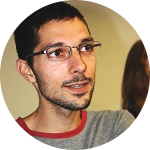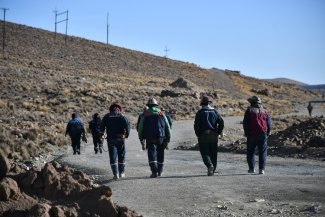
The situation in eastern Ghouta, formerly the breadbasket of Damascus, is bleak. Very bleak. Over 240 civilians have been killed in five days of mass bombings at the beginning of February 2018. In addition, the UN and the Union of Medical Care and Relief Organisations are reporting that between 346 and 366 civilians have been killed in airstrikes since Sunday.
The bombs have been raining down constantly on villages that have already suffered the worst chemical attack of the Syrian conflict, in August 2013. It very nearly triggered a military response from the US and finally resulted in a plan to destroy Syria’s chemical weapons following Russian intervention.
The UN Security Council passed a resolution saying that if the attacks were repeated, force could be deployed. The chemical attacks did not stop. At the beginning of 2018, doctors in eastern Ghouta were still treating patients for the symptoms of chlorine bomb attacks.
And chlorine bombs are only one of the instruments of death employed by the Syrian regime against the people of this rebel enclave on the capital’s doorstep.
A giant prison
The lack of access to health care is another, and more pernicious, weapon. Since October 2013, eastern Ghouta has been under siege by the Syrian army.
In a report published in September 2017, the NGO Syrian American Medical Society (SAMS) described the appalling consequences of the siege, which has prevented medicines from reaching Ghouta: "Thousands of patients suffering from cardiovascular conditions, diabetes, renal failure, asthma or epilepsy are at risk of dying for lack of treatment."
Contagious diseases such as typhoid, salmonella or tuberculosis are spreading because of the dire living conditions caused by the siege.
Mohamad Katoub, a member of SAMS, puts the number of patients in Ghouta needing urgent medical evacuation at 765.
At the beginning of February, he reported the death of Zuhreih Kadado, the 24th patient on the list of those who have died for lack of medical treatment.
Osama Nassar lives in Douma, the capital of eastern Ghouta. He took part in the creation of the first local coordination committees, borne out of the 2011 revolutionary movement. Twice arrested, he has experienced the Syrian prison system from the inside.
In an article published on Al-Jumhuriya, he draws a parallel between the lives of prisoners and those of the civilians under siege in Ghouta: "not just a region under siege, but rather a concentration camp, a giant prison that contains half a million human beings".
Ghouta has been supplied, as far as possible, via tunnels from Qaboun and Barzeh, and has been totally cut off from the world since February 2017 when the Syrian army retook possession of both villages.
Local armed groups, Jeish el-Islam and Faylaq el-Rahman, controlled the tunnels, often to the detriment of the civilian population, as Majd el-Dik describes in "East of Damascus, the end of the world".
Extraordinary world
Left to their own devices, the inhabitants of Ghouta have created what Osama Nassar describes as "an extraordinary world of inventions and alternatives: alternative electricity networks and water supplies, an alternative hospital, alternative fuel, alternative food, an alternative place to live, an alternative family."
Giath Alddin Zeen, president of the NGO Ghiras el Nahda, speaking from Turkey where he has taken refuge, looks back at the origins of the "extraordinary world":
"From October 2013, nothing was reaching Ghouta by road. Until then, we were distributing food and medical kits. So then we began development projects, using the resources available on the spot. Buying goats and sheep for example, supporting milk production, and agricultural projects."
Ghouta was originally farmland, and its inhabitants have green fingers. But as the bombings multiplied, with barrels of TNT, cluster munition rockets and chemical weapons, as well as the soaring price of fuel caused by the siege, it became virtually impossible for the farmers to keep growing subsistence crops.
Giath Alddin Zeen explains: "We created a research centre here consisting of doctors and engineers. They developed the biogas technique to create electricity from natural waste such as animal manure. And to make up for the lack of food, we decided to grow mushrooms". Rich in protein and vitamin D, mushrooms also have the advantage of growing indoors.
"The project wasn’t easy," continues Alddin Zeen. "The research centre was bombed, but a year later we finally got the project up and running and produced 2.1 tonnes of mushrooms. At the moment we are training 180 people in mushroom growing, to make the practice more widespread."
No solution
Marcell Shehwaro, an activist from Aleppo, is part of the ActForGhouta advocacy group, each of whose members try to improve the daily life of a family living under the siege.
Speaking in Beirut, she deplores the fact that the emotional response elicited by the siege of Aleppo in 2016 turned to indifference when it came to the Ghouta siege.
"But you have to admire the inventiveness of the people there in their efforts to survive," she says, and mentions in particular the Beyt el mouné (the Food House), where they use a technique for the traditional conservation of food, which the group then distributes to the poorest families in Ghouta.
The activist also deplores the lack of humanitarian aid. "The problem is the lack of follow-up. Humanitarian convoys rarely succeeded in getting into the towns under siege, they don’t bring enough food or the medicines needed for urgent cases. The international NGOs say they are staying in Damascus to put pressure on the regime, but objectively that has not produced results."
On 14 February, a nine lorry convoy sent by the UN and the Syrian Red Cross finally delivered humanitarian aid to Ghouta. The last convey to arrive was in November 2017.
It was not enough to meet the urgent need for medication. Nivinm from the Women Now NGO’s centre in Ghouta tells Equal Times: "Even the most basic medicines are rare. We are paying extortionate prices for anti-inflammatories that are three years out of date."
On 6 February, the UN called for a one month humanitarian truce in Syria "to enable the distribution of humanitarian aid, the evacuation of the wounded and the critically ill, and to alleviate suffering."
Marcell Shehwaro works tirelessly to restore hope to a family in Ghouta. But when she thinks about the future of the besieged region, her optimism evaporates: "There is no solution for Ghouta. Last year, in Aleppo, evacuation to Idlib was still possible" she says.
Indeed, until now, after the surrender of the besieged rebel towns such as Homs, Daraya, Moadamiyeh or Aleppo, their inhabitants have been transferred by force to Idlib, in the north-west of the country.
"But now Idlib is being bombed and is on its way to being wiped off the map by the Syrian army and its allies. What are they going to do with Ghouta’s half million inhabitants?".








